Your Questions
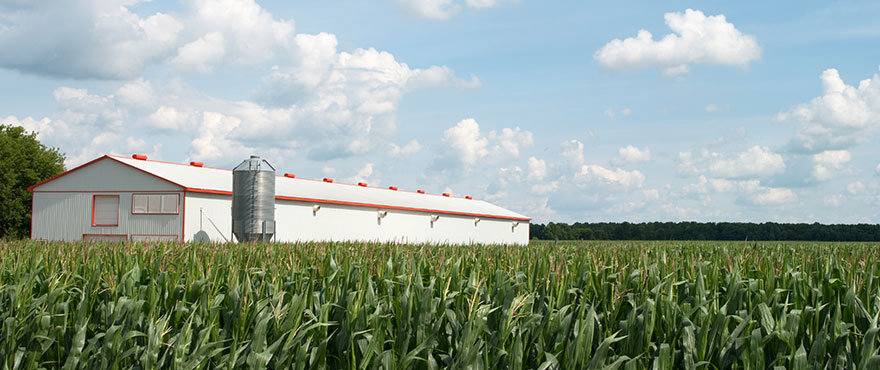
I heard that supply management means that Canadian chicken farmers are inefficient and unproductive.
Actually, Supply Management creates stability for farmers, which gives them the confidence to invest in their farms and invest in the future of chicken.
Are antibiotics given to chickens raised for meat? - Heather P, ON
Not all chickens are given antibiotics, but when they are, it’s to help keep birds healthy, for the sake of the animal, as well as for food safety. After all, only healthy chickens pass into the food stream. Chicken Farmers of Canada supports the responsible use of antibiotics that have been approved by the Veterinary Drugs Directorate of Health Canada to ensure food safety, animal health and animal welfare. We’ve got lots of in-depth information about antibiotics on our Antibiotics page. Check it out!
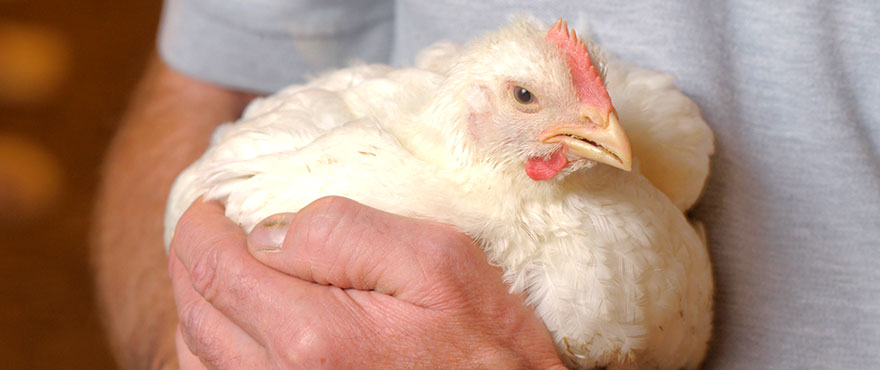
Do farmers use steroids or other hormones to grow huge chickens?
No, the use of hormones and steroids has been illegal in Canada since 1965.
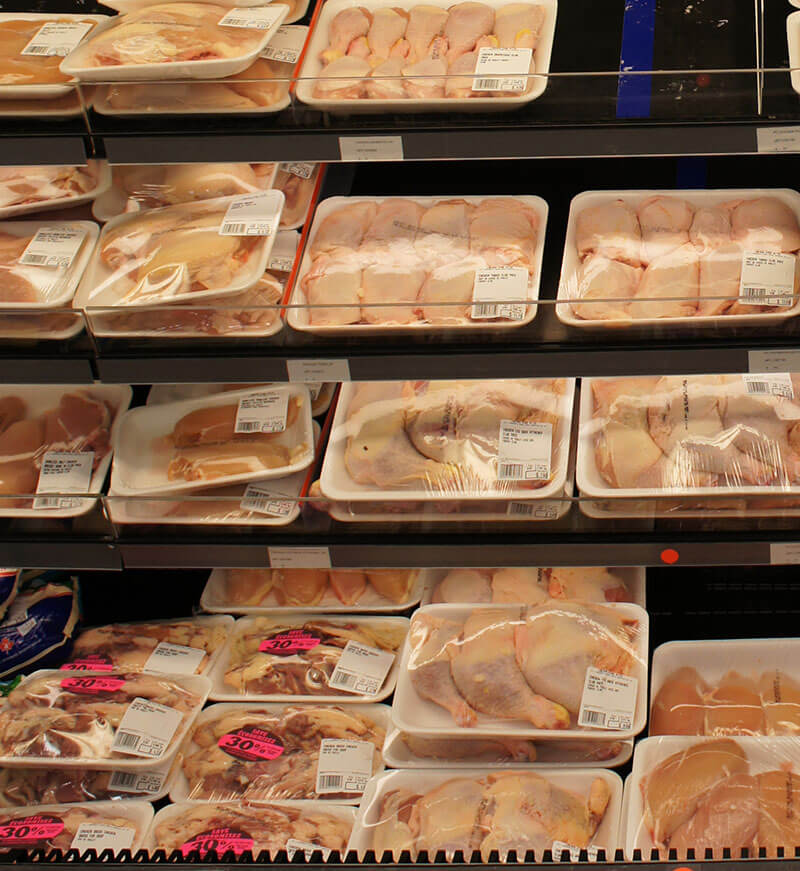
How can I tell if chicken meat I bought at the grocery store has Salmonella? - Nathan N, AB
Why do you continue the use of steroids in chickens when it is harmful and completely unnecessary? - David L, ON
Hi David. Thanks for your question. Actually, no steroids are used at all! Steroids (and hormones) are illegal for use in raising chicken in Canada, and have been since the 1960s. Click here for more information about how chickens are raised and how meat is labelled in Canada.
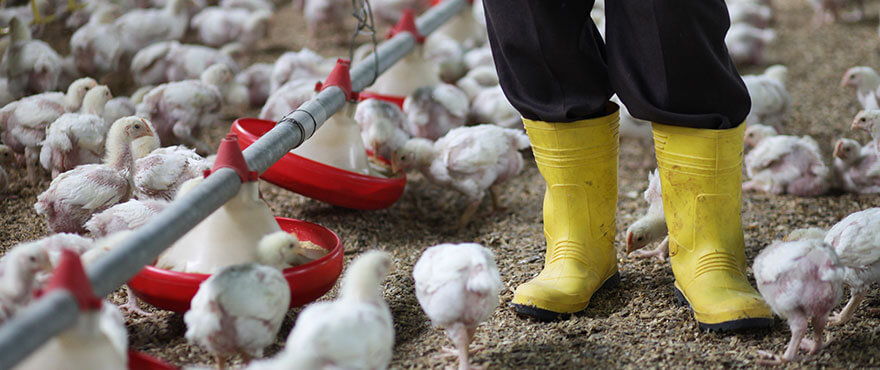
I heard you keep chickens in tiny cages where they can barely move.
No, our chickens are not raised in cages. In fact, they’re able to roam the floor freely where they can access feed and water.
How do chickens get from the farm to the slaughterhouse? - Josh B, MB
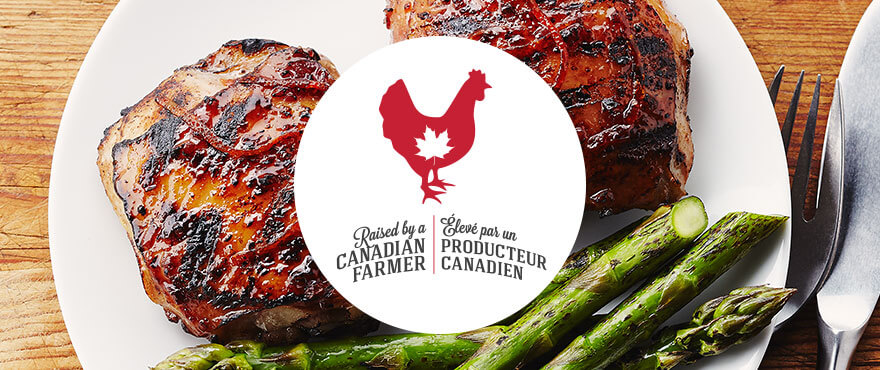
I heard that chicken nuggets and burgers are made from old birds that can’t lay eggs anymore – this is called spent fowl. How do I know if I am purchasing this product?
The best way to ensure that you are not buying spent fowl is to look for the Raised by a Canadian farmer Logo.
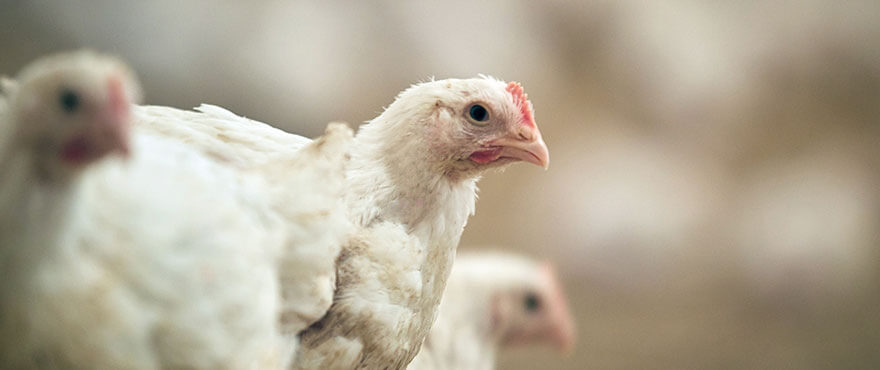
Do you cut chickens’ beaks off so they can’t peck each other?
No, we do not debeak chicken that is raised for meat in Canada.
So, really why did the chicken cross the road? - Geoff P, NL
Chickens are very curious animals and will often explore new things in their environment. So Geoff, to answer your question, the chicken that crossed the road was probably just curious to see what was on the other side!
I heard hormones are used to grow chickens bigger. Is this true? - Jessica D, ON
What do poultry plants do with all the extra parts (beak, feathers, feet etc…)? - Caitlin D, ON
Hi Caitlin, that’s a great question. Every chicken processing plant has a slightly different approach, but no part goes unused. These parts can be used in the making of plastics, and some plants even use them as biofuel to power the plant!
What kind of growth hormones are allowed to be used in Canada? - Chris B, QC
None! In fact, all hormones and steroids are illegal for use in raising chickens in Canada. For more information visit chickenfarmers.ca.
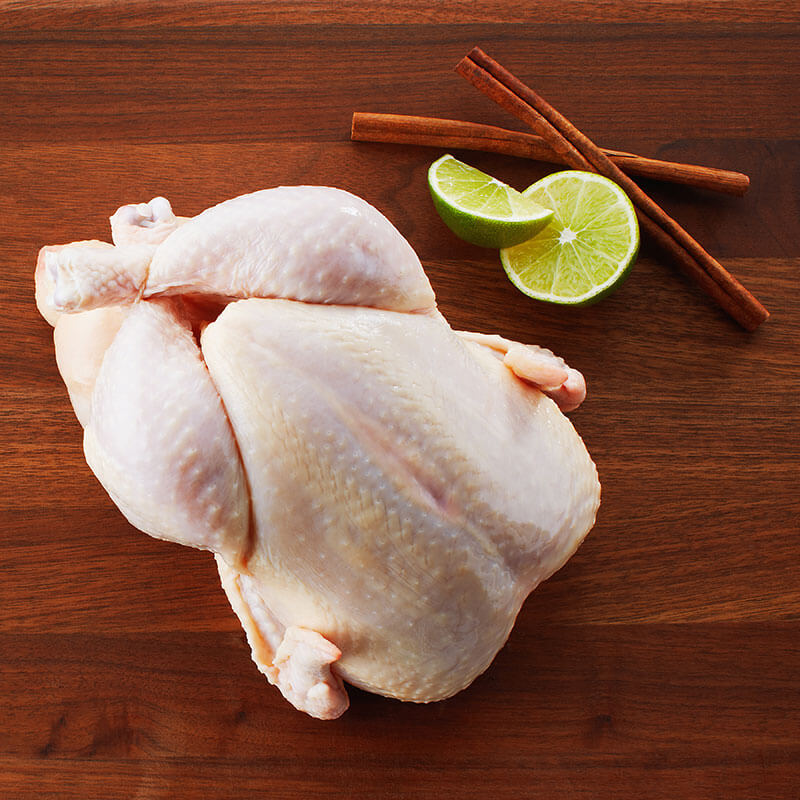
I’ve read that “broiler” chickens get so big that they become crippled by their own weight. Is this true? - Sophie B, BC
Is it true that to de-feather a chicken it’s scalded with hot water while it’s still conscious?! - Claire B, MB
No, Claire, it’s not true. Chickens are processed in a humane way. When the chickens arrive at the processing plants, they are anesthetized with a mild electric current that makes the birds insensitive to pain. Next, the anesthetized birds are passed by a cutting blade that severs the carotid and/or jugular arteries. This whole process takes place in seconds. Later in the process, the carcass is immersed in hot water, and machines with rubber contacts are used to rub the feathers off. For more information about animal care and how Canadian chicken meat gets from farm to table visit chicken farmers.ca.
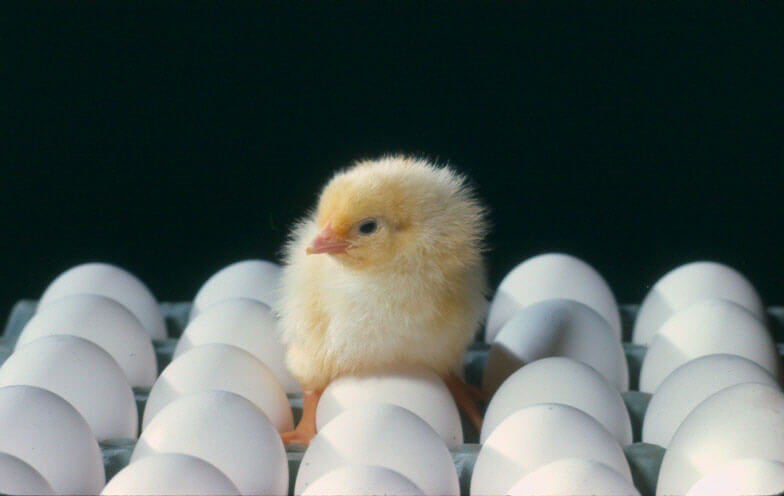
In your opinion, what came first: The chicken or the egg? - Spencer E, ON
We think the chicken came first, and we’re not the only ones. In a scientific report published in 2010, a group of British scientists concluded that only a chicken could produce the eggshell protein used to make a chicken egg, and therefore, the chicken must have come first.
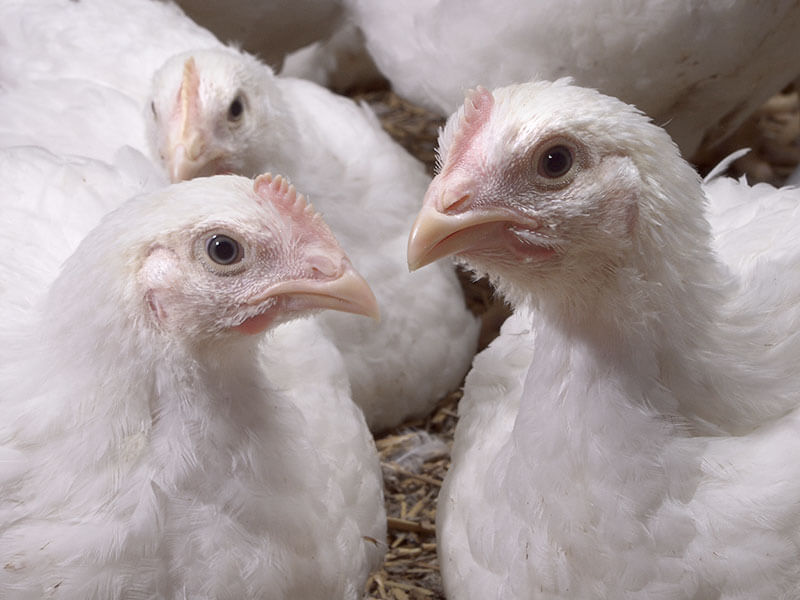
What kinds of chickens are raised for their meat in Canada? - James P, BC
The majority of chickens raised for their meat in Canada are cross breeds based on the Plymouth White Rock and the Cornish White. Some specialty breeds such as Silkies and Taiwanese Chickens are also raised for their meat.
Are there any rules or regulations around how many inches of floor space each chicken needs? - Dale F, ON
Yes. The amount of floor space required for each chicken is strictly regulated by national codes of practice to ensure birds have enough room to walk about and spread their wings. Specifically, the maximum weight allowed per unit of floor space is 31 kg/m2 (6.29 lb/ft2). This kind of looks like a cluster of baby chicks in a skating rink, so there’s lots of room to grow over the 6-8 weeks the birds will live in the barn. For more information see our Animal Care Program page.
Is it true that fast food chicken is genetically engineered? - Ryan A, ON
No, Ryan, it’s not true. The genetic engineering of chicken isn’t permitted in Canada. For more information visit chickenfarmers.ca.
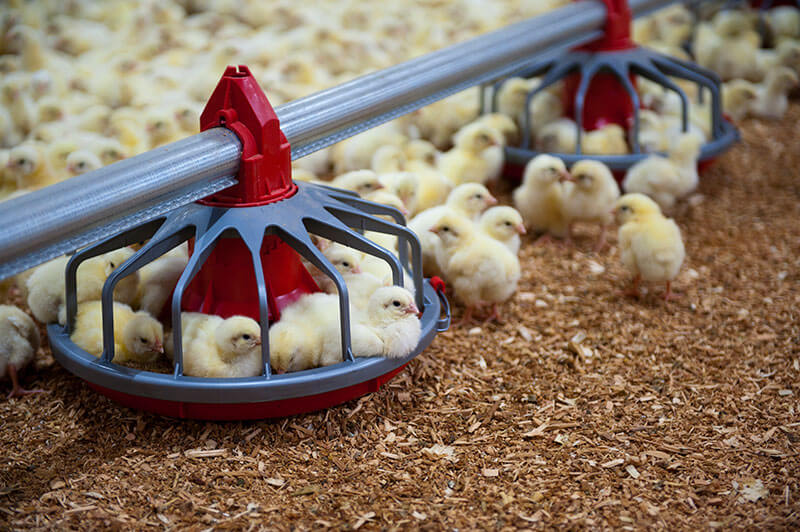
What do chickens eat? - Genevieve C, ON
Chickens in Canada eat a feed consisting of grain, grain by-products and protein-producing seeds (such as meal made from canola and soybeans). A small amount of other protein is added, such as bone meal and vegetable fats, as well as a small amount of vitamins and minerals. Tip: Although only some producers label their chicken meat as “grain-fed,” ALL chicken available in Canada is grain-fed!
How much chicken does the average Canadian eat?
The average Canadian ate 34.6 kg per person in 2018. This is the 15th highest per capita consumption in the world. Quatar is first with 50.4 kg per person.
Do chickens raised as food also lay eggs? - Melanie B, ON
In Canada, chickens raised for fresh meat don’t lay eggs. However, some processed meats (such as deli-meats, nuggets, and meat in pre-made soups) may come from egg-laying birds. Chicken Farmers of Canada only represents farmers raising chickens for fresh meat.
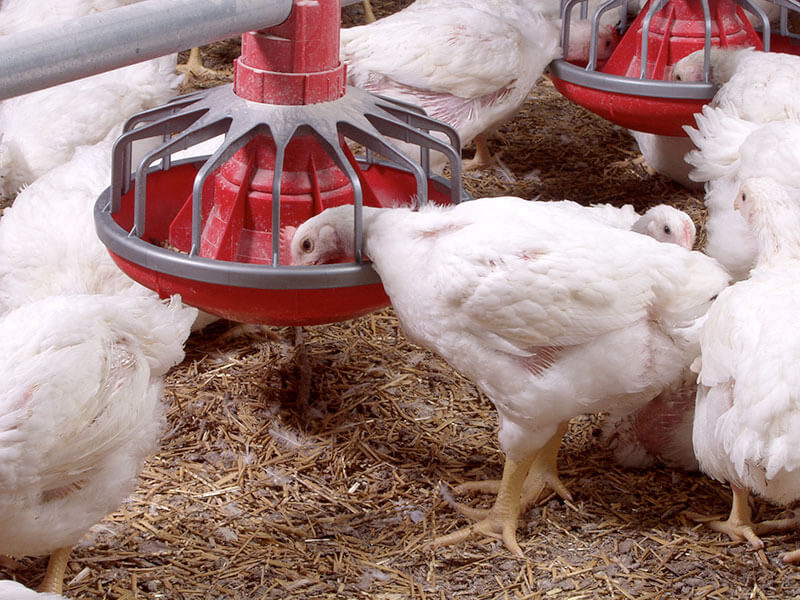
How are chickens fed? How do they drink water? - Trevor L, ON
Hi Trevor, thanks for your question. Chickens are free to get their own food and water. Feeders and water lines are installed in the barns so they can access water and food whenever they are hungry and thirsty.
How old are chickens when they go to market? - Jeff M, QC
What additives are in the chicken meat available in Canada? - David H, ON
None! Fresh, raw chicken meat is additive-free. However, some chicken products (such as chicken labelled “seasoned") could include additives. This is because the word “seasoned” means the meat has been processed using a mixture of salt, water and/or sodium phosphate to allow the product to retain some of its moisture when cooked (sometimes flavouring is added too). Single ingredient meat products, like boneless, skinless chicken breasts, thighs, etc. will have no ingredient lists, no mention of “seasoning,” and therefore, no additives.
Just curious, what’s the difference between ‘free range’ chickens and ‘free run’? Thanks! - Alyssa P, ON
Hi Alyssa, thanks for your question. There are no legal definitions for “free run” or “free range,” but generally “free run” means the chickens can move around freely within the barn. All chickens raised for fresh meat in Canada are considered free run. The term “free range” broadly refers to poultry that has been permitted to graze or forage outdoors.
What happens with all the chicken poop? - Marty T, ON
Barns are cleaned after every flock, with chicken poop most often sold for fertilizer production. However, some farmers use it on the farm as biomass fuel.

Are chickens farmed year round in provinces with very cold winters? - Andrew G, QC
Yes. Chickens are raised year-round in Canada thanks to climate-controlled barns where the chickens are free to roam, eat and drink.
How do you distribute 1 billion kilograms of chicken to consumers?
Most (62%) Canadian-produced chicken is sold through retail stores. The remaining 38% is through restaurants (fast food 23%, full service 10%), hotels and institutions (5%).
What is Chicken Farmers of Canada?
Chicken Farmers of Canada (CFC) is a national farmer-run organization. Our main responsibility is to ensure that our farmers produce enough chicken to meet the needs of the marketplace. The system we operate under is commonly known as supply management.
How many people are employed by, or in, the chicken industry?
The Canadian chicken industry is responsible for a total of 55,943 jobs on farms, in processing plants, in the transportation industry, etc. The production sector represents about 30,000 jobs.
Is Canada's chicken industry important to the economy?
Our industry makes a valuable contribution to Canada's economy every year. The Canadian chicken industry (both production and processing): is responsible for a total of 55,943 jobs (the production sector contributes 30,000 jobs); generates $1.78 billion in wages and personal income (the production sector represents $660 million in terms of wages and income); and contributes close to $9.9 billion to the Canadian economy as total economic activity generated (the production sector chips in more than $3.4 billion).
How much chicken does Canada produce?
Canada's chicken farmers produced 1,024 million kilograms of chicken in 2012. That's approximately 630 million birds.
How long does it take for a chicken egg to hatch?
It takes 21 days for a chick to hatch from an egg. Chicks are delivered to the farm from the hatchery, usually the same day they are hatched.
How are Canadian chickens kept?
Chickens raised for meat – called broilers – are kept in climate-controlled barns to protect against heat, cold, predators and diseases. The chickens are free to run (or roam) large areas at will and have access to feed and water 24 hours a day. This type of rearing is called free-run.
How big do the chickens get?
Most chickens are ready for market when they weigh around 2 kg. It takes 38-40 days for chickens to reach this weight. You may see chickens in other sizes too. A Cornish hen weighs between 1 and 1.1 kg at live weight and is ready for market in 28 days. And a roaster, which is grown in 50 days, weighs about 3 kg.
What does “seasoned” or “seasoning” mean when it comes to chicken? How can I tell?
You want to be sure you’re getting the product that’s right for you and your family. Sometimes, red meat and chicken products are labelled with the word ‘seasoned’ somewhere on the packaging – or you’ll hear an advertisement where a restaurant features a “100% seasoned chicken breast”. If you’re wondering what this means, we have the explanation for you.
You can “season” a chicken product by adding spice, flavoring or rub. But what about a product that is labeled “seasoned” and does not have a spice or a rub on it.
When it comes to meat (chicken or otherwise), the word ‘seasoned’ means the meat has been processed using a mixture of salt, water and/or sodium phosphate and sometimes, flavoring. This is done to allow the product to retain some of its moisture when it’s being cooked. The sodium phosphate binds the water molecules to the protein in the meat, allowing it to keep some of the moisture within it.
There are different perspectives on seasoning – some people prefer seasoned chicken meat, while others prefer to have a more basic product that they can use in their recipes.
Seasoning can raise the sodium count within the product and may be a concern if you’re worried about sodium intake. A ‘seasoned’ product will have to be labelled as such.
If you’re concerned about sodium intake, read your labels and bear in mind that the lower the protein percentage, the higher the ‘seasoning’ solution (and the higher the sodium count).
What is Air-Chilled Chicken?
More and more, retailers and restaurants are offering “Air-Chilled Chicken” to consumers. What is air-chilling, exactly? Here’s the simple answer:
Chicken is either air-chilled or water-chilled the moment it is killed at the processing plant. For safety, the most important thing is to immediately get the temperature of the chicken down to a safe level so that the rest of the process can be done.
Either the chicken is placed in a cold water bath to do this (water-chilling), or it has cold air blown onto it (air-chilling).
What are nitrates? Are they bad for you?
Nitrates and Nitrites are inorganic (chemical) compounds that are either man-made or naturally-occurring. The word derives its origin from nitrogen, which is found everywhere – in the air and in the soil.
Nitrates are used to cure, or preserve foods – like meat – and aim to ensure shelf-life of foods by making bacterial contamination meat to prevent the growth of Clostridium botulinum, whose toxin causes botulism.
Some consumers have questions about nitrates and other preservatives in their foods. Consumers have become concerned about nitrates and nitrites because of connections being made in many circles about theoretical links to nitrate consumption and health issues.
Here’s the technical stuff: While experts believe there is no direct link between nitrates and cancer directly, there is some concern about amines (proteins) in the body, which can combine with nitrites to form compounds known as nitrosamines, some of which may be carcinogenic. On the flipside, some scientific recommendations maintain that the benefits of curing meats (like avoiding botulism) continue to outweigh any potential risk.
For generations, curing food was done by salt alone – which removed moisture from the food and from any bacteria that may be contaminating it – and turned the nitrate into nitrite (the same thing happens in our digestive tract when we consume nitrates). Sodium nitrate is a specific kind of salt that is found naturally in vegetables like carrots, turnip, parsnips, celery and leafy greens.
Sometimes, in an effort to avoid nitrates, consumers turn to products labelled “no added nitrates”. In many of these cases, companies will sometimes use natural, rather than artificial, sources of nitrates, like celery root extract. Fresh, single ingredient meats will not have added nitrates.
The key is choice and understanding. Read your label carefully and make your decision from there.